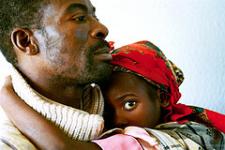You are here: Home » KIT Information & Library Services » ILS Information products » HEALTH AND POVERTY
KIT Dossier Health and poverty
By KIT Development Policy & Practice
The fact that the major health gains are to be made in the poorest social-economic strata is beyond discussion. Progress made towards the health MDGs does not necessarily imply progress towards improving the health of the poor and most vulnerable. Investing in the control of the so-called diseases of poverty does not automatically imply that these programs reach the poor. This largely depends on whether the wider health system is targeting the poor.
Analysis of public expenditure in health shows that few of the resources spent in the health sector actually reach the poor. According to a literature survey, only in 4 out of 21 countries public spending in health resulted in a larger subsidy to the poorest population quintile than to the richer quintiles (Argentina, Colombia, Costa Rica and Honduras). The same study shows that health services targeted at diseases of the poor (e.g. infectious diseases and maternal and child health) might be less pro-rich than secondary or tertiary care, but are nevertheless rarely pro-poor.(1)
As a result of this and other inequalities or social exclusion, poor groups suffer from relatively higher levels of ill health and mortality compared to the better off. The poor have less access to health services, have riskier health-related behaviors, and are disadvantaged with respect to other determinants of health status (e.g. education). Moreover, illness in a poor household can accelerate indebtedness and hence poverty or keep them poor.
Poverty is not just about income, it also has non-material dimensions such as socio-cultural (e.g. dignity, inclusion, gender) and political dimensions (e.g. empowerment, participation and accountability of governments, human rights).(2) This has implications for the way in which specific health services are delivered, if they are to benefit poorer and vulnerable population groups in a sustainable way and in respect of human rights. For example, in order to achieve poverty reduction through health it is important to address quality of care from a patient’s perspective, ensure community involvement and socio-cultural acceptability of policies, in addition to disaggregating monitoring and evaluation data and targeting poverty pockets for resource allocation.
In several countries special programmes aimed at reaching the poor have been successful and led to improvements in health for the poor. This required political commitment and vigilance for seeing through that policy is effectively implemented.(3) Moreover, as already noted by the World Bank report "Reaching the Poor with health, Nutrition and Population Services – What works, what doesn’t and why", it is important to provide evidence of what works why to make the health sector more equitable. This includes information and evidence on where the poor are, why they fail to access services, why services fail to reach the poor, as well as the role of the private sector in assisting the public sector to serve the poor.(4)
Finally, clearly defining expected results with regards to targeting the poor and vulnerable in the health sector and monitoring progress towards these goals enables the various stakeholders (including the poor themselves and their close advocates) to establish a common focus and hold the health sector actors accountable. Too often different actors (e.g. policy makers at central government level and implementers at local or facility level) work in isolation. Agreeing common goals and monitoring results can serve as a pressure instrument to hold governments accountable for achieving poverty reduction through more equitable health systems. These institutional and political processes are essential if pro-poor and equity policies in the health sector are to contribute to broader societal goals such as democracy building.
1. Filmer D. The incidence of public expenditures on health and education: background note for world development report 2004: making services work for poor people. The World Bank; 2003.
2. Maxwell S. Heaven or hubris: reflections on the new 'new poverty agenda'. Development Policy Review. 2003; 21(1):5–25.
3. Gwatkin DR, Wagstaff A, Yazbeck A. Reaching the poor with health, nutrition, and population services : what works, what doesn’t, and why. The World Bank; 2005
4. Gwatkin DR, Yazbeck A. Health services and the poor: vigilance, hope and hard work. Development Outreach. 2005 May.

Related item
Snelkoppelingen
Agenda News Press Working at KIT About KIT Cookies Contact
Nederlands -English




